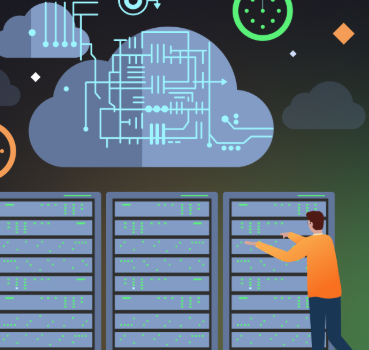
In the rapidly changing digital world, data centers are undergoing a significant transformation. Traditional centralized models are being replaced with more agile, distributed, and intelligent infrastructures. The shift is largely fueled by the growing demand for high-performance computing, minimal latency, and real-time processing, driven by technologies such as cloud computing, edge computing, artificial intelligence (AI), and machine learning (ML). Let’s explore the main technological shifts shaping the data centers of the future.
Rethinking Data Center Infrastructure
The conventional model of large, consolidated data centers is gradually giving way to a more decentralized approach. Businesses are moving towards strategically positioned, smaller-scale facilities that can better meet the demands of low-latency applications and real-time services. Industry analysts project that a quarter of companies will move away from massive, centralized facilities in favor of these smaller, distributed centers within the year.
The Rise of Edge Computing
Edge computing is set to become a cornerstone of next-generation data centers. By processing data closer to where it is generated—such as sensors, IoT devices, or end-user applications—edge computing significantly reduces latency and improves response times. Smart gateways and IoT integration play a critical role in enabling seamless connectivity between local devices and broader networks. These edge nodes will not operate in isolation; instead, they’ll act as an extension of the core infrastructure, sending raw data for processing and receiving refined insights in return—all while ensuring data security remains a top priority.
Data Vaulting: Managing the Data Surge
With the exponential growth of digital information, businesses are increasingly adopting data vaulting strategies. Instead of building new physical facilities, companies are leveraging intermediary storage solutions managed by third-party providers. These “data vaults” offer scalable storage on a pay-as-you-go basis, allowing businesses to efficiently clean, archive, and manage their data. By doing so, organizations can maintain a fluid exchange of information across cloud environments, vault systems, and edge locations.
Embracing Automation with AI and ML
The fragmentation of infrastructure demands smarter management solutions. AI and ML are stepping in to automate routine operations, detect anomalies, and optimize system performance across the entire ecosystem—from edge locations to centralized vaults. These technologies will drastically reduce the need for human oversight, especially in remote or inaccessible areas. By 2022, it’s expected that half of IT infrastructure in business data centers will operate autonomously, a trend that’s gaining even more traction in edge deployments.
Multi-Cloud as the New Standard
As businesses strive for flexibility and resilience, multi-cloud environments are becoming the norm. Leveraging services from multiple cloud providers allows companies to customize their infrastructure to meet specific application or workload requirements. This modular approach not only improves scalability but also ensures business continuity and rapid adaptability to changing market needs.
The evolution of data centers is a response to both emerging technologies and shifting business priorities. Tomorrow’s data centers will not be confined to a single location or technology—they will be a dynamic network of interconnected systems designed for speed, intelligence, and resilience. As we move forward, organizations that embrace this shift will be best positioned to thrive in the digital era.













